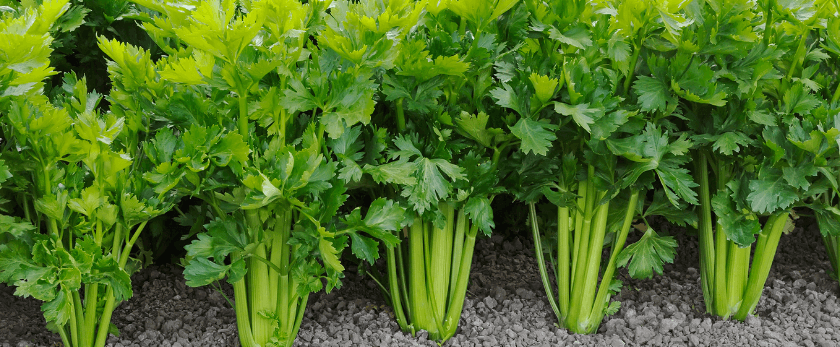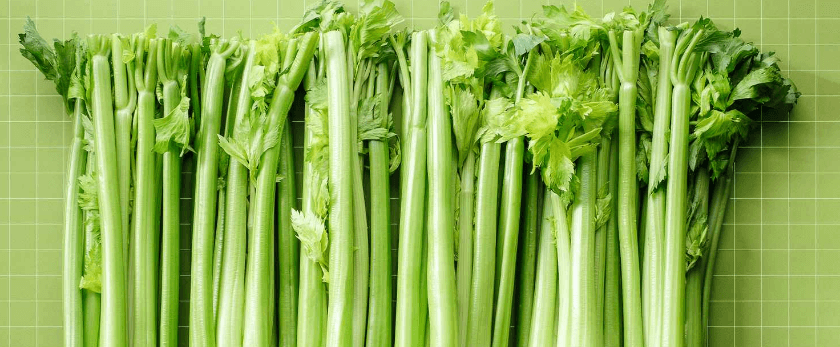Celery is a versatile and nutritious vegetable that can be grown in your own backyard. Not only is it a delicious addition to salads, soups, and stir-fries, but it also has numerous health benefits. Growing your own celery is not only cost-effective, but it also reduces your carbon footprint by eliminating the need for transportation and packaging. In this article, we will discuss how to grow celery in your garden, including caring for it, the best time to grow, and common problems you may encounter.
Caring for Celery
Watering
Celery requires consistent moisture to thrive, but it is important not to overwater it. The soil should be kept evenly moist, but not waterlogged. Water your celery plants deeply once or twice a week, depending on the weather and soil conditions. It is best to water in the morning to allow the leaves to dry before nightfall, which can prevent diseases.
Light
Celery prefers full sun, but it can also tolerate partial shade. If you live in a hot climate, it is best to provide some shade during the hottest part of the day. If you are growing celery indoors, place it near a window that receives plenty of sunlight.
Soil
Celery grows best in rich, well-draining soil with a pH level between 6.0 and 6.8. Before planting, amend the soil with compost or well-rotted manure to provide the necessary nutrients. Avoid using chemical fertilizers, as they can harm the environment and your health.
Fertilizer
Celery is a heavy feeder and requires regular fertilization. Use organic fertilizers, such as compost or fish emulsion, every two to three weeks. Be sure to follow the instructions on the fertilizer package and avoid over-fertilizing, as it can lead to stunted growth and poor flavor.
Pruning
To encourage healthy growth, remove any yellow or damaged leaves from the plant. You can also trim off the outer stalks as needed, but be sure to leave the inner stalks intact for continuous growth.

Best Time to Grow Celery
Celery is a cool-season crop and grows best in temperatures between 60-70°F. It can be grown in both spring and fall, but it is important to avoid extreme temperatures. If you live in a warmer climate, it is best to grow celery in the fall when temperatures are cooler. In colder climates, start celery indoors and transplant it outside once the soil has warmed up.
Common Problems with Celery
Pests
Celery is susceptible to pests such as aphids, slugs, and snails. To prevent these pests, keep your garden clean and free of debris, and use natural pest control methods such as companion planting and introducing beneficial insects.
Diseases
Celery can also be affected by diseases such as blight, leaf spot, and root rot. To prevent these diseases, avoid overwatering and overcrowding your plants. If you notice any signs of disease, remove the affected plants immediately to prevent it from spreading.
Bolting
Bolting is when the plant produces a flower stalk prematurely, which can affect the quality and flavor of the celery. To prevent bolting, keep the soil consistently moist and provide some shade during the hottest part of the day.
Responsible Disposal Methods
Once you have harvested your celery, it is important to dispose of any leftover plant material responsibly. Composting is an excellent way to recycle your celery scraps and turn them into nutrient-rich soil for your garden. If you do not have a compost bin, check with your local municipality for composting programs or drop-off locations.
If you are unable to compost, be sure to dispose of your celery scraps in a green waste bin instead of the regular trash. This ensures that the plant material will be properly composted and not end up in a landfill, where it can produce harmful greenhouse gases.
Conclusion
Growing your own celery is a rewarding experience that not only provides you with fresh, nutritious produce but also helps reduce your environmental impact. By following these tips on caring for celery, choosing the best time to grow, and being aware of common problems, you can successfully grow your own celery at home. Remember to dispose of any leftover plant material responsibly to contribute to a more sustainable future. Happy gardening!










